MORUS
Morus
L., Sp. Pl. ed.1: 986. 1753; Gen. Pl. 5: 424. 1754; Benth. & Hook, Gen. Pl. 3: 364. 1880; Hutch., Gen. Fl. Pl. 2: 156. 1967; Collett, Fl. Siml. ed. 2: 456. 1921 (Reprint 1980); Parker, For. Fl. Punj. ed. 1: 472. 1918 (Reprint 1973); Fl. China @ eFloras.org 5: 22; Ghafoor, Fl. Pak. @ eFloras.org p. 46.
Trees or shrubs, deciduous, monoecious or dioecious. Leaves simple, alternate, ovate, 3-5- costate from base, entire or 3-5-palmately lobed, margin toothed. Stipules lateral, membranous, caducous. Flowers unisexual, male and female. Male inflorescence axillary, pedunculate, cylindrical catkin. Male Flowers: Sepals 4, basally connate, lobes imbricate. Stamens 4, inflexed in bud, soon exserted. Pistillode present, turbinate. Female inflorescence long or short pedunculate, axillary cylindric spikes (catkins) or ovoid heads. Female Flowers: Sepals 4, connate at base, imbricate, persistent, accrescent and succulent in fruit. Ovary ovoid or globose, 1-locular, ovule solitary, pendulous; style absent; stigma 2-branched, branches divergent, papillose or pubescent. Staminodes absent. Fruit a cylindrical-ovoid sorosis, drupelets enclosed by the enlarged succulent calyces. Seeds subglobose, endospermous.
17 species
.
Morus alba
Morus alba
L., Sp. Pl. 986. 1753; Boiss., Fl. Or. 4: 1153; 1879; Collett, Fl. Siml. ed. 2: 457. 1921 (Reprint 1980); Parker, For. Fl. Punj. ed. 1: 473. 1918 (Reprint 1973); Fl. China @ eFloras.org 5: 23; Ghafoor, Fl. Pak. @ eFloras.org p. 50; M. alba var. atropurpurea (Roxb.) Bureau in DC., Prodr. 17: 238. 1873; M. atropurpurea Roxb., Fl. Ind., ed. 3: 595. 1832.
A medium-sized deciduous tree with compact leafy crown; bark of large stems grey-brown, rough, fissures mostly vertical; branches finely hairy to glabrescent. Stipules lanceolate, 5-6 mm long, densely covered with short pubescence. Leaves alternate, petiolate; petiole up to 6 cm long with adaxial groove, pubescent; leaf blade very variable in size and shape, narrow to broadly ovate, 2.5-15 cm x 2.5-12 cm, simple to irregularly lobed, even on the same plant, 3-costate from base, base truncate to cordate, margin regularly serrate or crenate-serrate ( or +/- irregularly 2-serrate ), apex obtuse, acute or acuminate; upper surface usually glabrous but mature leaves +/- scaberulous, on lower surface, midrib and principal veins sparsely pubescent or scaberulous or tuft of hairs in their axils. Flowers unisexual and plants usually dioecious. Male inflorescence catkins, pendulous, 10-20(-35) mm long including peduncle. Peduncle slender, pubescent, catkin ca. 5.5 mm wide with lax flowers. Male Flowers: Minutely pedicellate, not crowded. Sepals 4, free, or basally connate, broadly ovate, pale green, ca. 2.5 mm long; lobes imbricate. Stamens 4, inflexed in bud, soon exserted; filaments +/- equal to sepals; anthers exserted, globose to reniform, bithecous, dehiscence longitudinal by broad slits. Pistillode present, turbinate. Female catkins ovoid, pubescent, 5-10 mm long with equally long or slightly longer peduncle. Female Flowers: Sessile. Sepals 4, suborbicular, 2 outer keeled, about as long as or slightly larger than in male flowers, glabrous or +/- ciliate on margin, imbricate, persistent, accrescent and succulent in fruit. Ovary sessile, ovoid, 1-locular, solitary pendulous ovule; style absent; stigma 2-branched, branches divergent, papillose. Syncarp (sorosis) ovoid, 10-25 mm x 5-8 mm, white to pinkish purple or black, sweet, edible..
Common Names: Mulberry, Russian Mulberry, Silkworm Mulberry; Shahtoot, Tut, (Hindi)
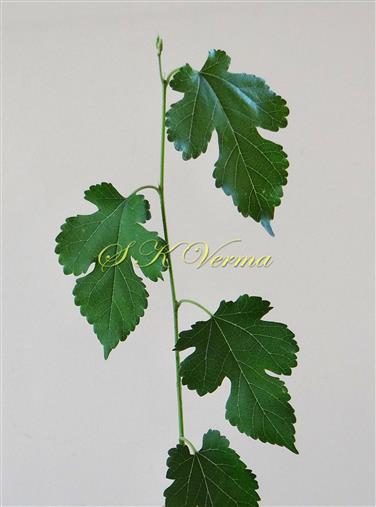
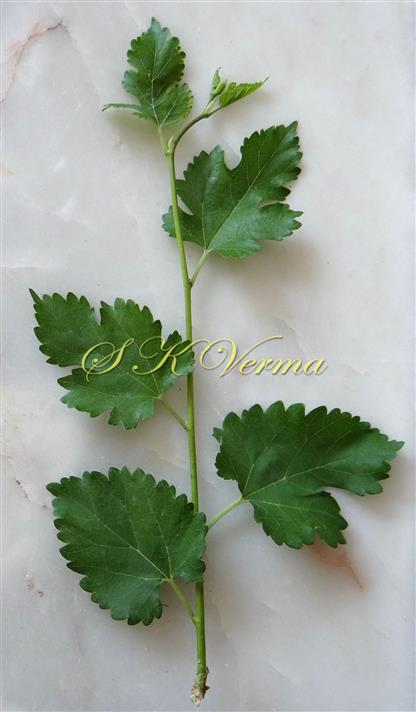
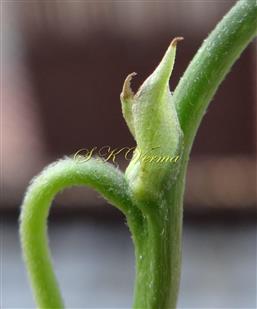
-DSC07880.jpg)
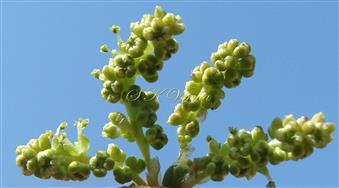
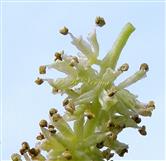



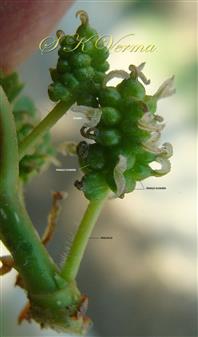
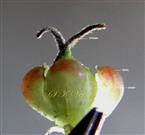
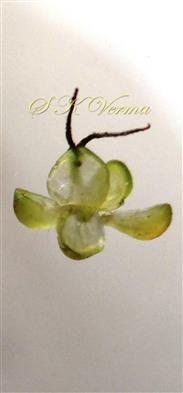
-DSC00532-Morus alba.jpg)
-DSC04231.jpg)




-DSC07880.jpg)




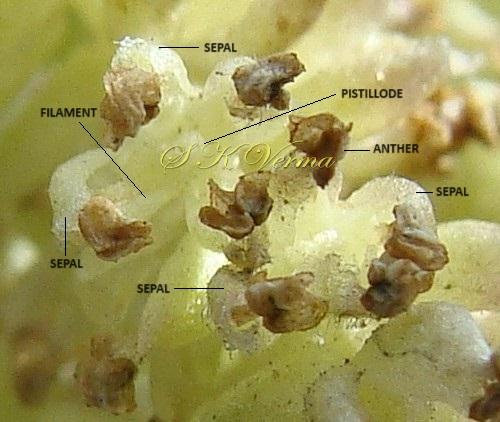



-DSC00532-Morus alba.jpg)
-DSC04231.jpg)